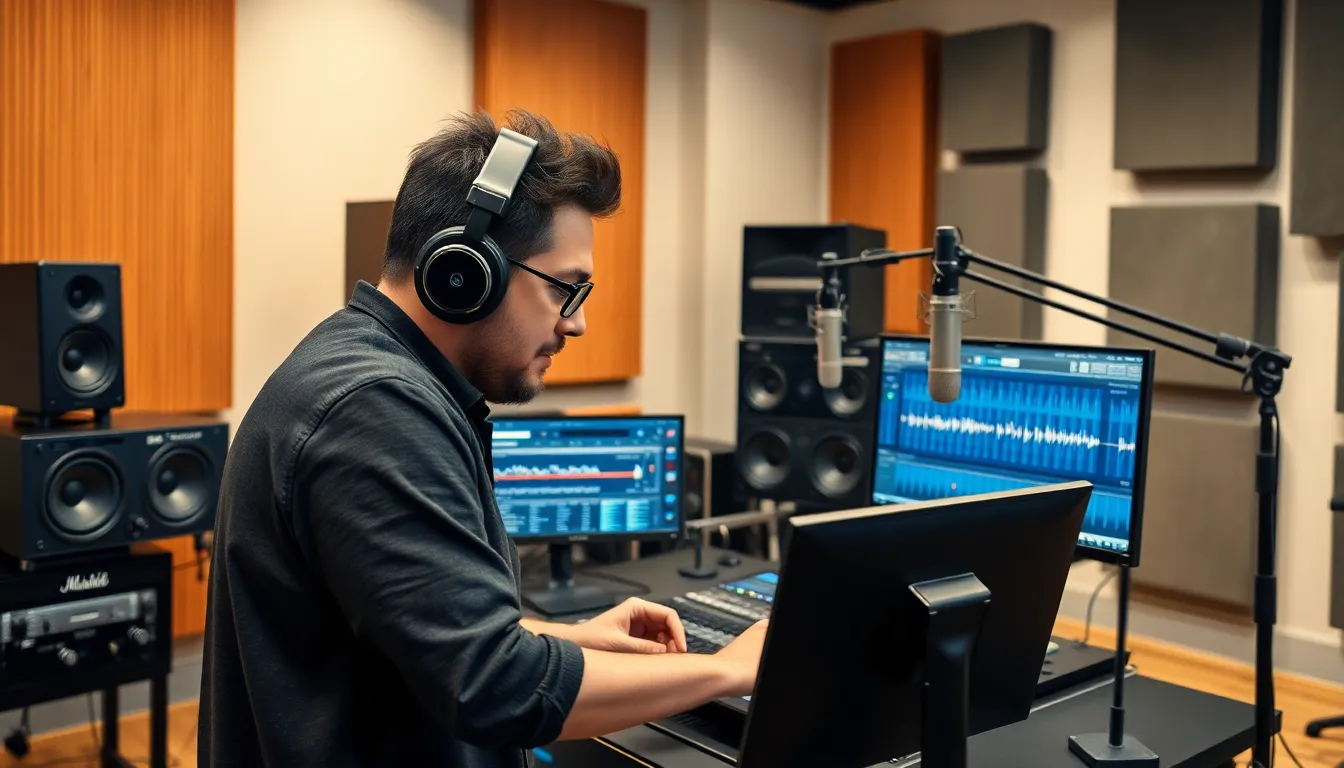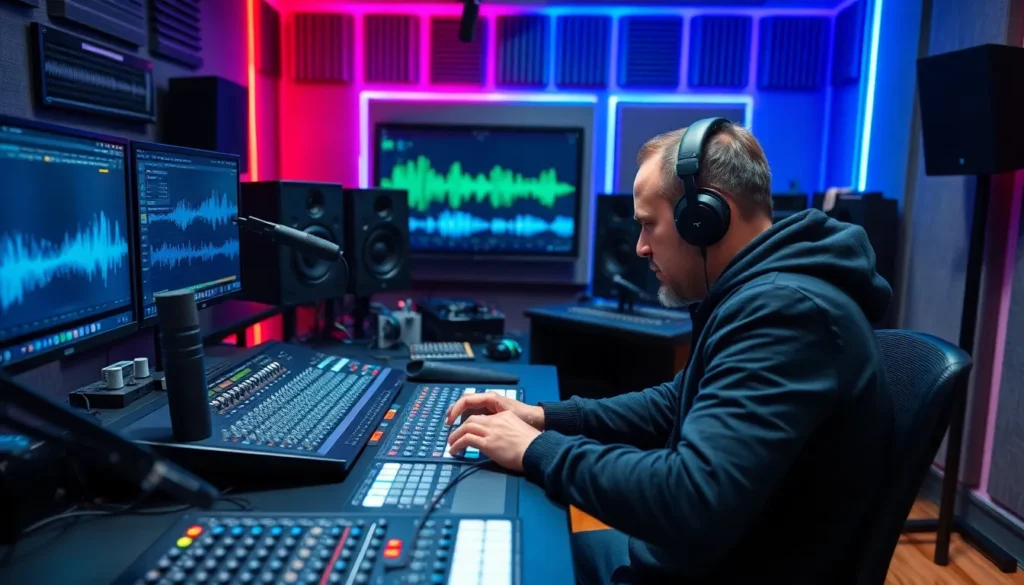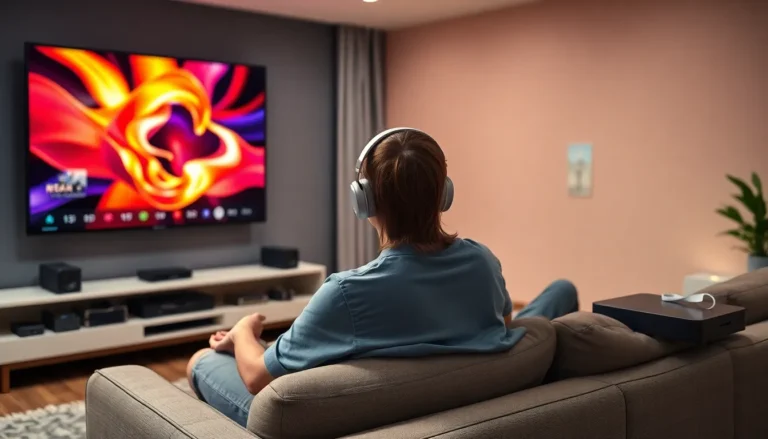In the world of audio production, audio panning automation is like the secret sauce that takes a good mix and turns it into a great one. Imagine your soundscape as a delicious pizza—without that perfect balance of toppings, it’s just a flatbread. With panning automation, sound waves dance across the stereo field, creating a rich and immersive experience that keeps listeners coming back for more.
Table of Contents
ToggleWhat Is Audio Panning Automation?
Audio panning automation refers to the dynamic movement of sound within a stereo field during playback. This technique allows audio engineers to create a sense of space and directionality in a mix. By adjusting the position of sound waves across the left and right speakers, audio panning automation adds depth to recordings.
Utilizing automation envelopes enables producers to control the panning of individual tracks over time. For instance, an engineer can move a guitar from the left to the right channel throughout a song. This movement captures listener interest and provides a unique auditory experience.
Creative applications of audio panning automation include shifting vocals, instruments, and effects. Panning dramatically alters the sense of aural dimension, helping to differentiate sounds and prevent clutter. For example, swirling effects can simulate movement, enriching the listening experience.
Additionally, different genres benefit from distinct panning techniques. In electronic music, for instance, wide stereo images enhance rhythmic elements. In contrast, acoustic recordings often use centered panning to maintain vocal clarity.
Mixing software typically includes intuitive automation tools for panning adjustments. Engineers can visually manipulate panning in a digital audio workstation (DAW) for precise control. Implementing these adjustments in real-time contributes to a dynamic mix.
Audio panning automation also plays a critical role in live sound production. Engineers can adjust panning on-the-fly to accommodate audience positioning and achieve optimal sound coverage. This adaptability ensures that listeners enjoy a balanced experience, regardless of their location in the venue.
Benefits of Audio Panning Automation

Audio panning automation offers several advantages in audio production that enhance the overall sound experience.
Enhanced Spatial Sound
Spatial sound improves significantly with audio panning automation. Producers achieve a dynamic stereo field as sounds shift smoothly between left and right speakers. This movement creates a more immersive experience for listeners. Spatial distribution of instruments and vocals helps to define their presence clearly within the mix. For instance, moving a snare drum subtly from left to right can draw attention at key moments. Immersive tracks entice the audience, making the production more engaging. Additionally, automatized panning may facilitate the creation of luscious soundscapes in genres like ambient music, enriching the auditory experience overall.
Improved Mixing Control
Mixing control benefits greatly from audio panning automation. Engineers have precise tools at their disposal to adjust panning throughout the track. They can tailor movements of individual sounds without complicating the overall mix. Utilizing automation envelopes enables gradual changes that add nuances to the audio production. For example, transitioning background vocals from one side to another enhances a song’s emotional impact. Enhanced control allows engineers to manipulate levels effectively, ensuring clarity across various elements. By monitoring and adjusting panning in real-time, sound engineers can maintain optimal balance and coherence in complex mixes.
Techniques for Implementing Audio Panning Automation
Implementing audio panning automation involves various techniques that enhance the mixing process. Producers can choose between manual panning techniques and automated panning plugins to achieve desired results.
Manual Panning Techniques
Manual panning techniques provide artists with direct control over track placement in the stereo field. Engineers can set the pan knobs on individual tracks to create specific spatial arrangements. Adjusting these knobs in real-time allows for responsive changes during a performance or mix session. Many mixers feature a central position for clarity, while others shift harder left or right for dramatic effects. This hands-on approach aids in crafting dynamic soundscapes that engage listeners effectively. Producers often use this method for creative decisions, ensuring consistent sound placement and clarity.
Automated Panning Plugins
Automated panning plugins streamline the panning process, offering precise control over audio movement. These plugins often feature visual interfaces that illustrate the panning envelope, making it easy to see adjustments over time. Setting specific parameters results in complex movements that would be tedious to achieve manually. Many plugins provide presets, enabling quick starts for various genres. Adjusting the speed and depth of movements leads to significant emotional impacts within a track. Many engineers appreciate the flexibility that automated plugins provide, allowing for finely tuned panning adjustments that enhance listening experiences.
Common Applications of Audio Panning Automation
Audio panning automation serves multiple purposes across various fields, enhancing the listening experience through thoughtful sound placement.
Music Production
Music production relies heavily on audio panning automation to sculpt mixes. Producers position instruments across the stereo field, creating depth and separation. For example, a guitar may shift dynamically from left to right, capturing the listener’s attention. Vocal tracks often require balanced panning to maintain clarity, while backing harmonies can add dimension by occupying different spatial areas. As electronic music thrives on wide stereo imaging, its panning techniques enhance immersive experiences. Ultimately, automation facilitates precise control, allowing artists to shape the sonic landscape throughout a track.
Film and Video Editing
Film and video editing utilizes audio panning automation to enhance storytelling. By assigning sound effects and dialogue to specific locations in the stereo field, editors create a more engaging atmosphere. Actions, such as a car driving from left to right, convey movement and spatial awareness. In dramatic scenes, shifting audio can heighten emotional impact, guiding the audience’s feelings. Consistent panning across various sound elements enriches the overall audio palette. As a result, this technique supports the narrative and immerses viewers more effectively in the cinematic experience.
Audio panning automation is a powerful tool that transforms mixes into immersive experiences. By skillfully manipulating sound across the stereo field, producers can create depth and clarity that captivates listeners. Whether in music production or live sound settings, the ability to dynamically position sounds enhances emotional impact and ensures an engaging auditory journey.
With various techniques available, from manual adjustments to automated plugins, artists can explore creative possibilities that suit their unique style. As audio technology continues to evolve, embracing panning automation will remain essential for those seeking to elevate their sound and connect with audiences on a deeper level.






